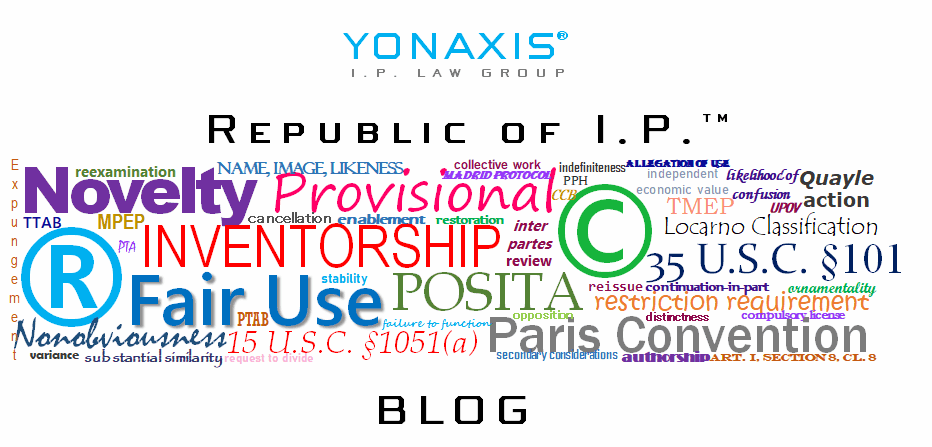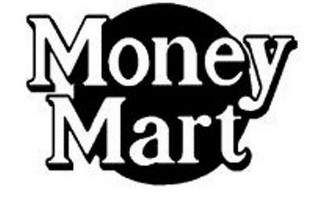A recent Court of Appeals for the Federal Circuit case sheds light on two little-known trademark doctrines: the doctrine of natural expansion and the doctrine of tacking. Both can be useful arguments in an ex parte application. However, both require very specific sets of facts in order to apply them properly in a response.
In Dollar Financial Group, Inc. v. Brittex Financial, Inc.,1 Dollar Financial Group (DFG) operated a chain of loan finance and check cashing shops since the early 1980s under the trade name MONEY MART with a first use date of 1984. DFG then expanded its business services to include to include pawn brokerage and pawn shop services. DFG filed for and registered two marks for MONEY MART, a word mark, Reg. No. 4,524,540, in Class 36 for “Pawn brokerage and pawn shops; providing monetary exchange services, namely, exchanging gold and silver of others for cash; issuing of prepaid debit cards; issuing of prepaid gift cards; gift card transaction processing services,” with a first use date of 2005, and a design, Reg. No. 4,532,073, in Class 36, for “Loan financing; check cashing and electronic funds transfer services, but not including extensions of credit except to the extent evidenced by a check; pawn brokerage and pawn shops; providing monetary exchange services, namely, exchanging gold and silver of others for cash; issuing of prepaid debit cards; issuing of prepaid gift cards; gift card transaction processing services,” with a first use date of November 1996.
Brittex, although not having any registered marks, also had common law rights in MONEY MART PAWN and MONEY MART PAWN & JEWELRY, which it used in commerce in Texas since 1993. Brittex filed a cancellation proceeding against DFG based on its common law use of MONEY MART under Section 2(d) likelihood of confusion. The USPTO’s Trademark Trial and Appeal Board (TTAB) initially denied Brittex’s petition for cancellation, holding that DFG had priority to the MONEY MART name. However, Brittex’s appeal was reversed, and the Federal Circuit found the original finding that DFG’s pawn shop services were covered under the larger loan financing services was erroneous. Upon remand, the TTAB held that Brittex had priority in MONEY MART, which it had used in commerce since 1993, while DFG only began use on pawn shop services in 2012. DFG appealed, and the Federal Circuit affirmed.
DFG had argued two theories. The first, doctrine of natural expansion, is defined as “the first user of a mark in connection with particular goods or services possesses superior rights in the mark as against subsequent users of the same or similar mark for any goods or services which purchasers might reasonably expect to emanate from it in the normal expansion of its business under the mark.”2
DFG’s argument rested heavily on the fact its newer pawn shop services emanated from its earlier loan finance services, use of which went back to 1984. However, the Federal Circuit disagreed. Noting case law precedence held that the “business expansion” doctrine was a purely “defensive doctrine.” Further explained, the doctrine of natural expansion when properly used defensively, allows a senior user to prevent a junior user’s trademark registration on logically related goods or services. However, DFG’s use was offensive in nature – that is, DFG wanted to register a mark on an expanded line of goods or services where it would lead to a situation of a likelihood of confusion with another similar mark on similar goods or services. The Federal Circuit therefore refused DFG’s registration on its pawn shop services because it was obtained in 2014, after Brittex’s use began on its pawn shop services in 1993.
Similarly, DFG argued a second theory, the doctrine of tacking, which is defined as:
The doctrine of tacking allows a trademark owner to make “certain modifications” to its mark and still rely on “the priority position of an older mark.” The underlying policy for the doctrine of tacking is to encourage trademark owners to update its mark, but still create the same, continuous commercial impression as an earlier mark, and allow those owners to respond to changing marketplace preferences without losing their prior rights to that mark. The caveat is that the goods and services between the new and old marks must be substantially identical where the new identification are within the normal evolution of the old identification.3 However, due to a procedural technicality, the Federal Circuit held DFG forfeited its tacking argument because it failed to raise the argument prior to the appeal. It should be noted DFG’s tacking argument was stronger than its natural expansion argument, and the newer pawn shop services could be seen as being substantially identical to the loan financing services of its earlier registration.
There are a few takeaways:
- The doctrine of natural expansion and doctrine of tacking are two lesser-known trademark doctrines that can be argued to counter a Section 2(d) refusal if the facts fit the specific elements of each doctrine;
- Trademark owners should note that common law trademarks can be used offensively to prevent others from using a confusingly similar mark as theirs in commerce;
- Although common law use of a trademark worked for Brittex here, it is not always successful against a senior trademark user;
- Trademark rights are always predicated on use of the mark; registration only confers certain additional benefits.
For more information on these two doctrines, trademark prosecution, or responding to a Section 2(d) likelihood of confusion refusal, please contact Yonaxis I.P. Law Group.
- Case No. 23-1375, ___4th___ (Fed. Cir. Mar. 19, 2025). ↩︎
- Orange Bang, Inc. v. Ole Mexican Foods, Inc., 116 USPQ2d 1102 at *19 (TTAB Sept. 10, 2015) [precedential]. ↩︎
- See, e.g., Bertini v. Apple Inc., 63 F.4th 1373, 1381 (Fed. Cir. 2023). ↩︎

